Gentle par 4, but make sure you have warmed up before starting, there are plenty of balls in the pond in front of the tee from players who have started ill prepared.
A good tee shot will leave a short second shot to a narrow green, which will leave a good chance for your opening birdie. Miss the green and it becomes a difficult par.

The Grey Heron always lives in the neighbourhood of water. With its long legs the Heron is able to wade through wet grasslands, swamps and water. It will often wait motionless for its prey and then suddenly attack the target; little fish and frogs, but also mice and moles. The Herons breed with dozens together high in the trees. It is often seen hunting in the spring time here on the first hole to the left of the pond.
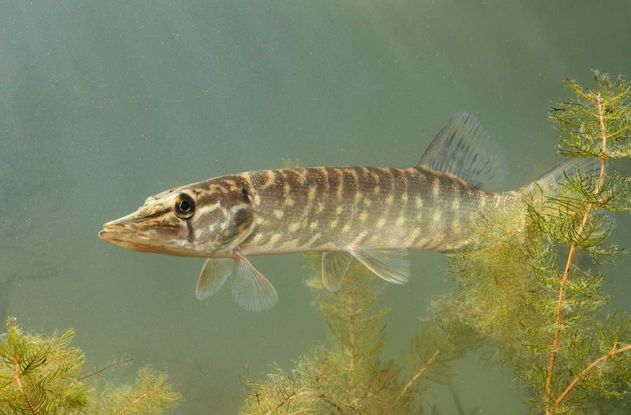
Large specimens of the Northern Pike can be found in the lakes and ponds of the golf course. This predatory fish feeds on smaller fish and amphibians. To catch its prey, the pike hides in the weeds. Sometimes during spring you can see the pike sunbathing in the shallow parts of the water. Keep quiet as you walk from the 2nd green towards the 3rd tee and you might be lucky enough to catch a glimpse of a pike in the pond on your left.
The first of the par 5’s. A dog leg to the right, with water and bunkers down the right hand side. A good tee shot to the left half of the fairway will give you a good view of the well guarded green. The long hitters may be tempted to go for the green in 2 shots, but most golfers will be happy to be on the green in 3 shots and then 2 putts for a par.
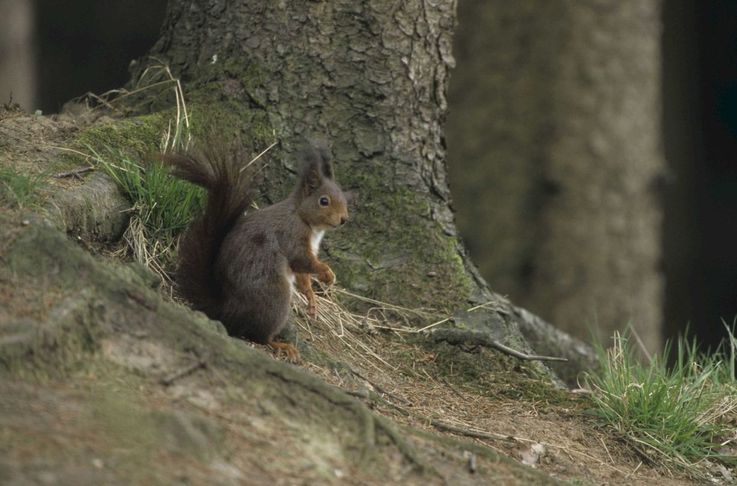
The Red Squirrel feels at home amidst the fir trees of the golf course. He builds his nest with branch material in these trees. He feeds himself with nuts, buds, mushrooms and sometimes small birds. During the winter they only come to the ground when necessary to search for food or to bury food items. Often seen in the trees on the left, half way along this hole.
Short par 4 that should give you a chance for a birdie.
The further left you are with the tee shot, the more difficult the approach to the green over the green side bunkers. A good tee shot between the 2 fairway bunkers, avoiding the pond on the right, will leave a short iron to the green. Don’t be too aggressive with out of bounds just beyond the green.

On these sandy hills to the right of the 4th fairway, one can notice several small plants like the Little White Bird’s-Foot, Cat’s Ear and Fall Dandelion. These are characteristic plants that live in a poor soil and don’t like manuring. Amongst these plants you can also find different types of fungi.

The Scotch Broom grows naturally on poor soil. Small knobs appear on the roots. They contain bacillus that provide the plant with nitrogen. The Scotch Broom flowers bright-yellow in spring. Earlier on this plant was used to make brooms. They grow here on the 5th hole in front of the water on the right side.

Long-Eared Owls roost during winter. This means that they rest in one and the same place with other owls. They may roost communally with 7 to 50 owls. When you find a pellet underneath the trees, you can assume there is a roosting spot in the neighbourhood. Typical for these owls are the prominent ear tufts that they use to communicate with the other owls. Not easy to see, but playing early in the morning or late in the evening, you have a chance of spotting this beautiful bird.
Longish par 4. The tee shot to a wide fairway looks easy, but the fairway narrows down past the bunker. Missing the fairway makes an accurate second shot to this narrow undulating green very difficult. Saving par if you have missed the green is not easy because of the severe slopes. Once on the green be very happy with two putts.

The Primrose is a protected and very rare plant in Flanders.
The plank likes to grow alongside banks and ditches, in brush woods and shrubs. It flowers in the spring. A large population of Primroses have been planted in this area of the golf course as part of a large Nature Project.
We are proud as a golf club that we can help this endangered plant re-establish itself.

The Damselfly looks very much like the Dragonfly. The latter one is generally bigger and spreads its wing horizontally at rest. The little Damselflies when at rest hold their wings folded back over the abdomen. When mating, the male grips the female firmly behind the head; thus making them fly in tandems and forming a mating wheel. Dragonfly eggs are deposited directly onto aquatic plants. The larves are fearsome predators that live in the water for a couple of years. The pond here is an ideal habitat for them both.

Willow trees can be found throughout the golf course. Willow trees were in the past planted a lot neat the boundaries of meadows forming natural fences. The wood was used to weave baskets or as firwood. The amount of While Willows has strongly diminished. The remaining old Willows serave as ideal breeding places for hollow-breeders like the little owl. (Athena Noctua) On both sides of the 9th Willow trees form a natural boundary of the Hole.

The Green Frog generally has a dark green body with dispersed dark spot and stripes. In contrast to the brown frog, this species stays in the water all summer long. The Green Frog is notorious for its noisy croaking concerts. On the ponds surrounding Holes 10 and 11 we are often greeted by their concerts.

The Yellow Pond Lily is a kind of water lily. The plant can easily spread and even become rampant. The green frog can often be observed sitting on the leaves of this aquatic plant. The leave have a bitter taste and consequently not eaten by fish like the carp. Take your time and enjoy the sight of these attractive plants in the pond in front of and to the left of the 11th green.
Super par 5 without a bunker. But water and out of bounds flanking the Hole requires steady nerves to hit a precise tee shot onto the fairway. Even when you have reached the fairway your problems have not finished, as the Hole dog-legs between the ponds left and right of the fairway. The green demands an accurate approach if you are to make a birdie.

This beautiful aquatic bird is often to be seen on the lake on the left side of the 12th. A century ago the species was almost extinct. The males have a deep red collar around the neck. The black-and-white striped chicks can be seen in the springtime catching a ride on the back of their parents.

The Great Cormorants sometimes come in groups to fish on the lake. You can often see them on the dead tree across the water from the 13th green, where they perch on the branches in the sun to dry with wide-spread wings. Indeed, the Great Cormorant does not have a fat layer to protect itself against the water, so that the bird has to dry itself after each dive before it can fly again.
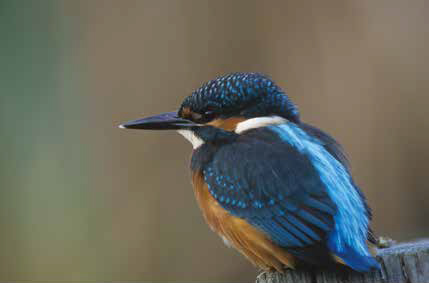
The Kingfisher is small, colorful bird with a relatively large beak, which he uses to catch and hold its prey. This bird is sometimes seen around the lakes, ponds and ditches on the 12 th , 13 th & 14 th Holes. Its prey exists mainly from small fish, but also frogs, dragonflies and beetles. Large prey is beaten on a branch or stone, before they can eat it. Also the Kingfisher swallows its prey with the headfirst so that scales and fins can’t get stuck in the headfirst so that scales and fins can’t get stuck in the bird’s throat.
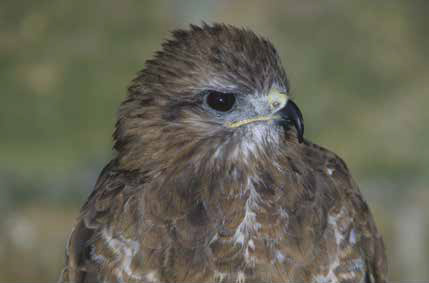
The famous raptor eats rabbits, mice, but sometimes also squirrels and water hens, but mainly carrion. The Buzzard feels at home in the woodlands and nests in high trees. Here we often see them in the woods to the left of the 15 th tee or on the right of the 16 th Hole. Bazzards from Northern areas migrate to our country to pass the winter, which accounts for the larger number seen in that period.
Long dog-leg par 5. The long hitters will have to risk a very tight tee shot to be able to attack the green with their second shot. For the shorter hitter the goal should be to keep the ball on the fairway from the tee, as the fairway becomes wider further along the Hole. Better to be short with the approach to the green, the pound is waiting.
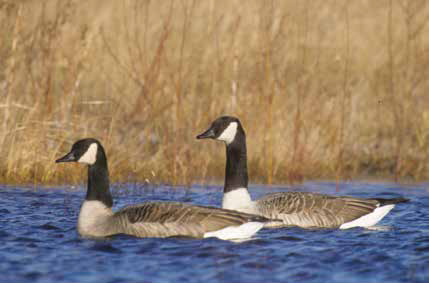
The Canada Goose is recognizable by its white chest and brown body and is regularly seen on the last 7 Holes of the course. Though not indigenous, their numbers are increasing rapidly in the Flanders. These birds feed mainly on plant material, and can often be seen enjoying a snack around the 16th green. When feeding in water, they submerge their heads and necks to reach aquatic plants, sometimes tipping forward like a dabbling duck. Flocks of these birds often feed on leftover cultivated grains in fields, especially during migration or in winter.
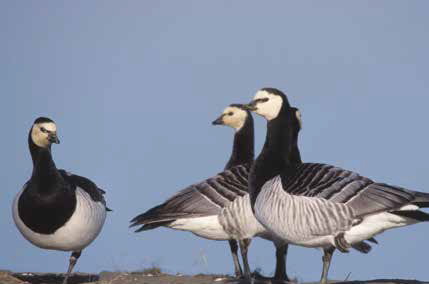
Compared to the Canada Goose, the Barnacle Goose is smaller, has a white forehead and a black chest. The feathers are mostly grey. They breed in Greenland and northern Eurasia. Wintering in northern Europe, the British Isles and sometimes in Flanders. Some Barnacle geese are setting here in Flanders year round. Often seen together with the Canada Goose near the 17th Hole. As with many exotic species, can make problems for the indigenous geese populations.
Wonderful Strategic finishing par 5 with the fairway turning between ponds on both the left and right side. The pond on the left continues until just in front of the green. An accurate tee shot is needed to find the fairway, which then leaves a long second over water to a small well-guarded green. Playing safe also demands attention as a bunker about 110 meters before the green splits the fairway and needs to be carried to allow a relatively simple approach.
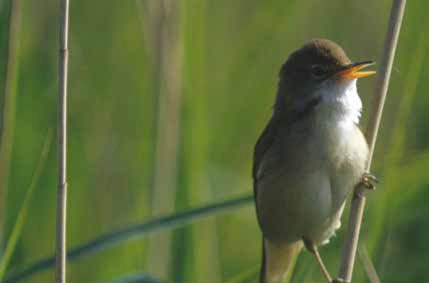
The little bird with its brown colored feathers is hard to find in the already because of its camouflage colors. This bird is often in water banks, low shrubs and even hedges if there is water in the area. This bird belongs to the song birds and the little reed warbler has a beautiful song, which can often be heard when going on the path from the tee to the fairway here on the 18 th Hole.
Download the Handicap Tables




























